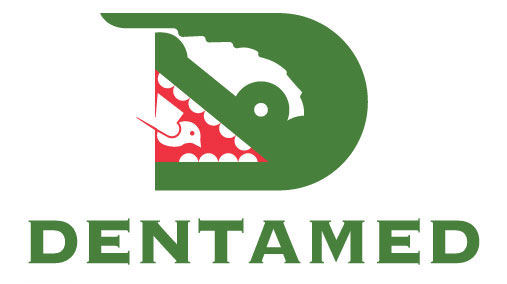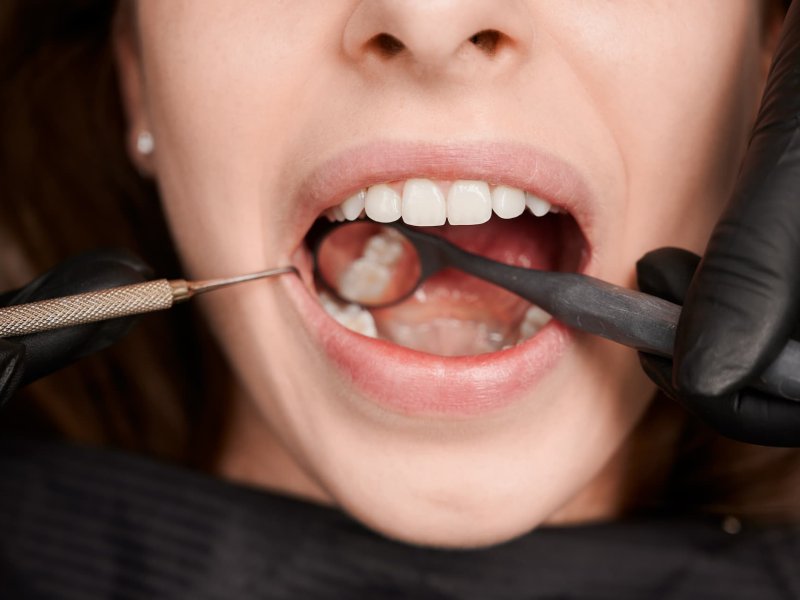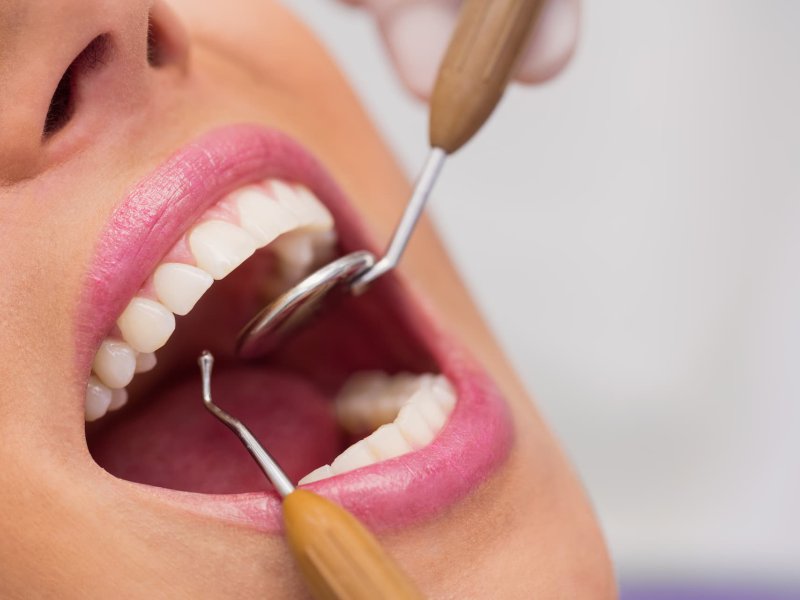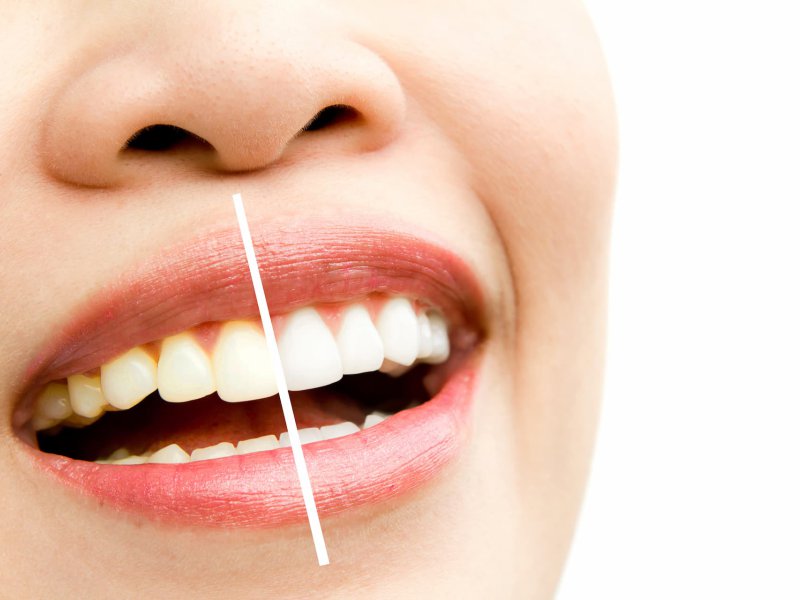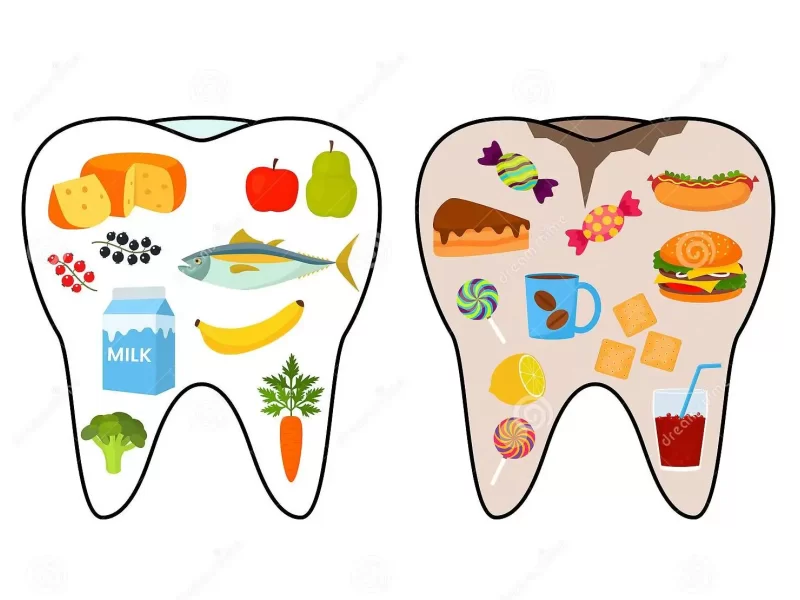What Is Tartar (Calculus)?
Tartar is a calcified build-up that forms when dental plaque—a layer of bacteria—hardens over time. It typically accumulates along the gumline or on the back surfaces of teeth. These deposits don’t just cause cosmetic concerns; they are also among the primary causes of gum inflammation, bad breath, and periodontal diseases that can ultimately lead to tooth loss.
As a dentist, I want to emphasize that tartar removal is not merely a cosmetic procedure. It is one of the most fundamental steps in maintaining oral health. Tartar does not disappear on its own and cannot be removed by brushing at home. Therefore, professional cleaning is essential.
Although people often ask, “Is tartar cleaning harmful?”, when performed correctly and by a qualified professional, the procedure does not damage enamel; on the contrary, it protects gum health and prevents more serious problems in the future.
In this article, we will explain what tartar cleaning is, how it is done, who needs it, and what to watch for after the procedure—based on scientific principles.
What Is Tartar?
Tartar (calculus) is a mineralized layer that forms when dental plaque in the mouth hardens and adheres firmly to the tooth surface.
It usually accumulates at the gumline and in posterior regions. Because its surface is rough, it facilitates bacterial adhesion and can lead to gum inflammation, bad breath, and tooth loss over time.
Tartar cannot be removed with at-home brushing or mouthwash. It can only be eliminated through professional cleaning by a dentist. If left untreated, it can progress, causing gum recession and bone loss.
For this reason, it is important not only for aesthetics but also for maintaining a healthy oral microbiome.
How Does Tartar Form?
Tartar formation occurs in several steps. First, a thin protein film called the pellicle forms on the tooth surface. This film allows oral bacteria and plaque components to adhere more easily. Over time, plaque accumulates on inadequately cleaned tooth surfaces and its microbial flora increases.
Plaque then combines with calcium and phosphate ions found in saliva and begins to mineralize.
This process typically starts within 24–72 hours; within a few days, these mineral deposits integrate with the plaque structure and harden into tartar. The resulting tartar can be present both above the gumline (supragingival) and below the gumline (subgingival).
Because subgingival tartar is hidden under the gums, patients often fail to notice it. This type of calculus can have more destructive effects on the periodontium (gums and supporting tissues). In addition, the roughness of tartar makes it even easier for new plaque to accumulate, perpetuating the cycle. Ultimately, gingivitis, gum bleeding, and even bone loss may develop.
Why Is Tartar Cleaning Necessary?
Tartar cleaning is vital not just to improve the appearance of teeth but to protect oral health. Because tartar is in constant contact with the gums, it causes inflammation and gum disease. If not treated, this can result in gum recession, bone loss, and even tooth loss.
Tartar presents a rough surface that harbors bacteria. Over time, these bacteria can lead to tooth decay, halitosis, and persistent gum bleeding. The presence of tartar can also negatively affect the success of dental treatments such as fillings, crowns, and implants.
Regular tartar cleaning protects gum health, improves oral hygiene, and helps prevent more serious long-term problems.
How Is Tartar Cleaning Performed? What Are the Steps?
Tartar cleaning is a professional procedure performed by a dentist or dental hygienist. Depending on the extent of build-up, it may be completed in a single session or over several sessions.
It generally includes the following steps:
Examination: The mouth is evaluated first, and the degree of tartar build-up is determined.
Scaling: Ultrasonic devices or manual instruments are used to remove tartar from the tooth surfaces and below the gums.
Root planing: If calculus extends below the gumline, the root surfaces are smoothed to reduce the risk of inflammation.
Polishing: Tooth surfaces are polished with special pastes; this makes them smooth and reduces new plaque adherence.
Fluoride application (if needed): Fluoride may be applied after cleaning to prevent sensitivity and strengthen enamel.
Temporary sensitivity may occur after the procedure, but this is usually short-lived. Effective cleaning is a fundamental step for the long-term health of both teeth and gums.
Does Tartar Cleaning Hurt? Is Anesthesia Necessary?
When proper techniques and gentle interventions are used, tartar cleaning causes minimal discomfort for most patients and can even be completely painless in some cases. With ultrasonic scaling, water spray helps loosen and break up deposits, making the process more comfortable than traditional hand instruments alone. However, some people—especially those with exposed root surfaces—may feel some sensitivity during the procedure.
The intensity of discomfort depends on the amount of tartar, the condition of the gums, the patient’s pain threshold, and the chosen technique. If a patient has very sensitive teeth or significant gum inflammation, local anesthesia can be administered to ensure comfort.
In general, tartar cleaning is performed without local anesthesia. If anesthesia is needed, the dentist will decide and use safe doses. Mild sensitivity that may last a few hours after the procedure is normal; cold/heat sensitivity and slight gum twitching are temporary.
In short, tartar cleaning is largely painless; comfort can be increased with anesthesia when necessary. Informing your dentist about pain concerns beforehand helps select the most appropriate approach.
What Should You Watch For After Tartar Cleaning?
Proper care after tartar removal is critical to prolong the benefits of cleaning. Gum tissues may be slightly sensitive; therefore, extra care should be taken for the first few days.
Managing sensitivity: Avoid very hot or cold drinks; choose soft foods. Do not brush too hard.
Maintain oral hygiene: Continue gentle but effective brushing and remove plaque using floss or interdental brushes.
Mouth rinses: Alcohol-free, mild antiseptic mouthwashes can be helpful.
Avoid chemical irritants: Very acidic beverages, extreme hot/cold foods, and smoking can have adverse effects in the first days.
Keep follow-up appointments: Dentist-scheduled checkups are important to detect early re-accumulation of tartar.
Fluoride support: If recommended, fluoride gels or varnishes can reduce sensitivity and strengthen enamel.
These measures reduce post-cleaning discomfort and provide long-term protective benefits for oral health.
How Often Should Tartar Be Removed?
The frequency depends on many factors such as oral hygiene habits, saliva composition, diet, genetics, and gum condition. As a general rule, most people benefit from professional cleaning every 6 months.
Because some individuals form tartar more quickly, cleaning every 3–4 months may be necessary. Heavy smokers, people with diabetes, or those with periodontal disease often benefit from more frequent cleanings.
Stability after treatment is the main criterion for setting the interval. The dentist will determine the ideal frequency by considering gum condition, tartar recurrence, and the patient’s home-care compliance. For some, yearly intervals may be sufficient; in sensitive or high-risk cases, shorter intervals are required.
The right frequency not only prevents build-up but also preserves gum health, limits decay, and helps avert major dental problems.
Does Tartar Cleaning Damage Teeth?
When performed using proper techniques and under professional supervision, tartar cleaning does not generally damage teeth; on the contrary, it protects dental health. Ultrasonic devices used with water spray minimize the risk of harming enamel. Manual instruments, when used carefully, do not damage mineralized tissue.
However, if the procedure is done improperly—using excessive force or without control—it can cause enamel scratches or gum recession. Overly aggressive instrumentation on root surfaces may expose roots and increase sensitivity.
The correct approach is to examine each tooth surface carefully, select appropriate instruments, and operate with control. The experience of the dentist or hygienist is key. Post-procedural sensitivity may last a few days; this is usually temporary and should not be considered a sign of significant damage.
In conclusion, when done correctly, tartar cleaning does not harm teeth; it is a fundamental procedure that supports the health of the mouth, gums, and teeth.
